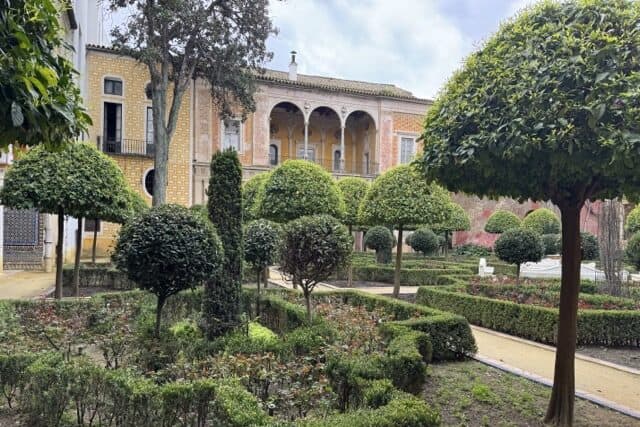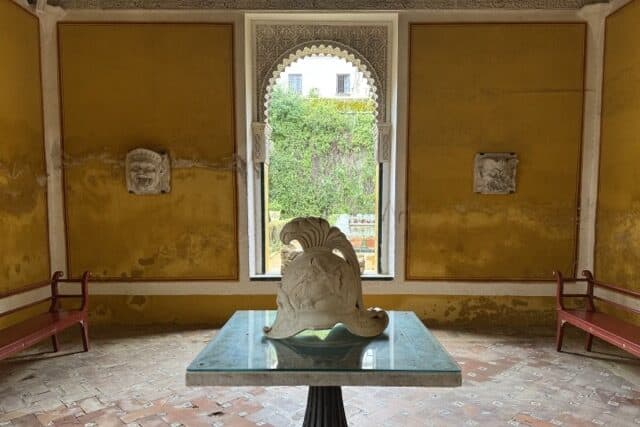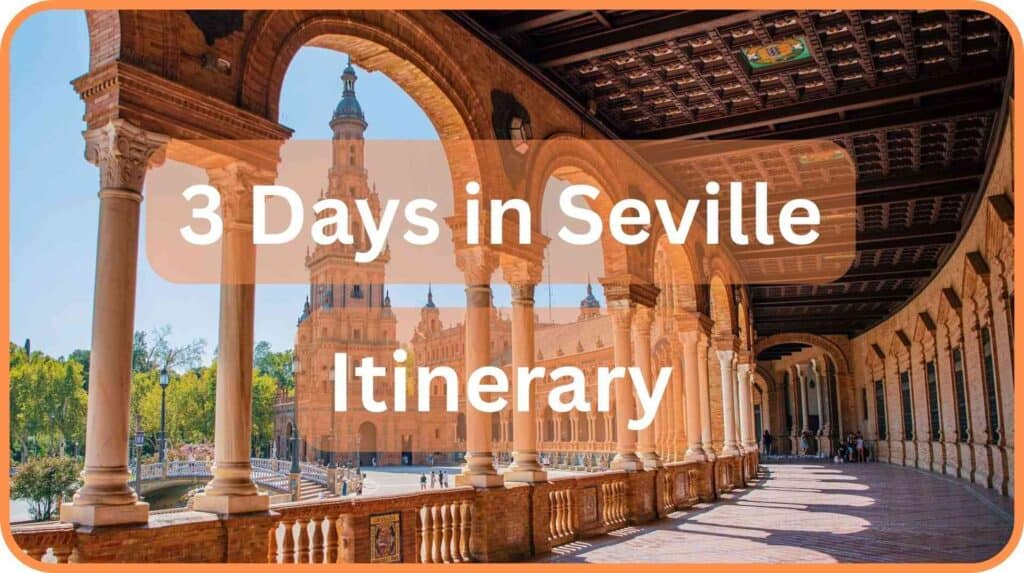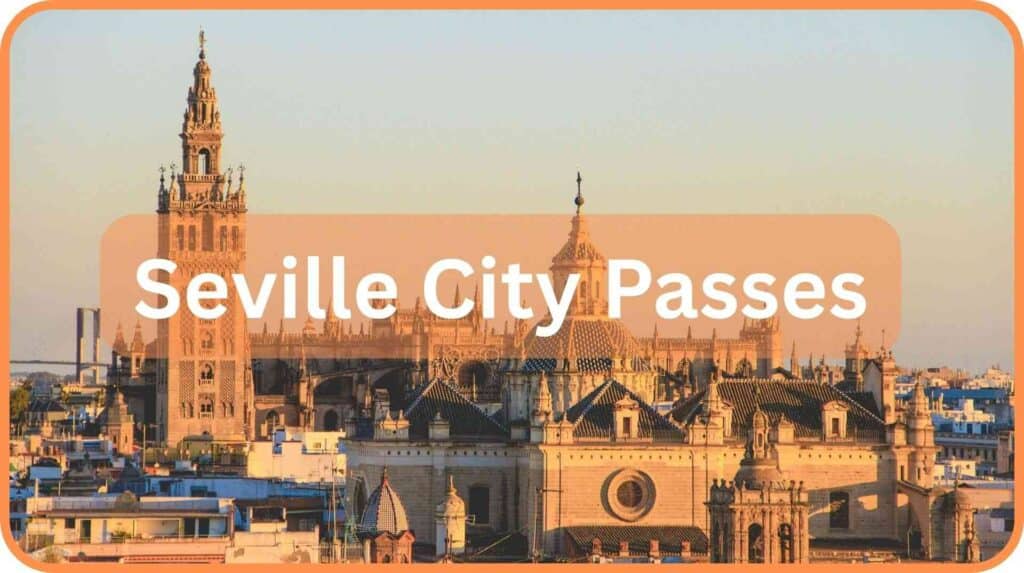Seville Itineraries
Top Attractions
- Royal Alcazar
- Seville Cathedral
- Metropol Parasol (Las Setas)
- Seville Bullring
- Plaza de Espana
- Casa de Pilatos
- Flamenco Show
- Maria Luisa Park
- Archivo de Indias
- Torre del Oro
- Seville Tiles (Azulejos)
- Bullfighting
- Football Stadium Tour
- Opera House
- Museum of Illusions
- Seville Aquarium
- Isla Mágica
- Jardines de Murillo
Disclaimer
Posts on visit-seville.com may contain affiliate links, meaning we get a small commission if you decide to make a purchase through our links, at no cost to you. Any income earned helps maintain this website and keeps it ad-free.
Casa de Pilatos Seville – Tickets and Visitor Guide
How to Visit Pilate’s House in Seville – Location, Tickets & Tips


Casa de Pilatos (Pilate’s House) is one of our favourite places to visit in Seville. It’s a beautiful 16th-century palace right in the city centre, with peaceful courtyards, marble arches and colourful tiles that show the best of Seville’s Mudéjar and Renaissance styles.
It’s often overlooked by visitors who head straight to the Royal Alcazar, but this palace is just as special and much quieter. You can wander through its shady gardens, tiled rooms and open patios without the crowds, taking in all the little details that make it such a hidden gem.
Casa de Pilatos Seville – General Information |
|
Location |
Plaza de Pilatos, 1, 41003 Sevilla, Spain (Get detailed directions to Casa de Pilatos Sevilla). |
Opening Times |
As of 2025: Monday to Sunday, 9:00AM – 6:00PM. |
Entry & Tickets |
General admission: €12 (Book Casa de Pilatos tickets online) |
Casa de Pilatos – Tickets & Tours |
|
How to Buy Tickets for Casa de PilatosYou can buy tickets online or directly at the entrance for the same price, but from experience the queue outside Casa de Pilatos can get quite long. We’d recommend booking online in advance so you can walk straight in without waiting.
Book Casa de Pilatos entry tickets online Casa de Pilatos Entry Ticket
Powered by
GetYourGuide
Guided Tour Including the Upper FloorThe standard entry ticket only includes access to the ground floor. If you want to visit the beautiful upper level of Casa de Pilatos, you’ll need to book a guided tour. This visit takes you through the ground floor and then into the upstairs rooms, where you get a real sense of how the family lived and how the palace evolved over time. It’s a lovely way to experience the full charm of the house. Book Casa de Pilatos guided tour (includes upper floor)
Powered by
GetYourGuide
|
Visiting Casa de Pilatos Seville
We’d recommend planning around 1 hour to explore the ground floor of Casa de Pilatos at your own pace.
If you choose the guided tour, this lasts around 1.5 hours in total and includes both the lower and upper levels.
The audioguide included with your entry ticket is available in Spanish, English, French, Portuguese, German, Japanese and Italian.
Accessibility is generally good, but some of the floors are uneven and the courtyards are cobblestoned, so we recommend wearing comfortable shoes with good grip. The upper floor can only be accessed by stairs, as there’s no lift available.
You’ll find toilets and a water refill point inside, but there’s no café or restaurant on-site. Luckily, Casa de Pilatos is right in the city centre of Seville, surrounded by plenty of tapas bars and cafés just a short walk away.

Did you know? Casa de Pilatos has been used as a filming location for several productions, including The Crown, Knight and Day, starring Tom Cruise, and Ridley Scott’s Kingdom of Heaven.
What to see in Casa de Pilatos Seville
Casa de Pilatos has a lot to explore and the free audio guide makes it easy to learn about each space as you walk through. If you want to make the most of your visit, these are the main areas we think are worth paying attention to:
Main Courtyard (Patio Principal)
The Main Courtyard is the heart of Casa de Pilatos and the first space you walk into. It dates back to the 15th century and brings together a mix of Gothic, Mudejar, Renaissance and later Romantic touches, which is what makes it so special. The arches, the marble columns and the colourful tiles all show how the palace kept evolving over time. It is one of the most beautiful courtyards in Seville and sets the tone for the rest of the visit.
Pretorio Hall (Salón Pretorio)
The Pretorio Hall was once used for formal events and important meetings, so it was designed to make an impression from the moment guests entered. It still preserves all its original elements, including the high ceilings, the family coats of arms and the classical sculptures displayed around the room.
Golden Room (Sala Dorada)
The Golden Room is small but full of detail. Its name comes from its beautiful carved ceiling decorated with mocárabes, a traditional Moorish style made of tiny, honeycomb-like patterns that catch the light. It is one of the rooms where the Mudejar influence is most visible.


Chapel and Antechapel
The Flagellation Chapel and Antechapel are the oldest part of the entire complex and you can clearly see the mix of Muslim and Christian influences in the decoration. The Sevillian tiles are some of the most impressive in the entire building.
The chapel gets its name from the flagellation of Christ, which was a common theme in religious art.
The Gardens (Jardín Chico & Jardín Grande)
Casa de Pilatos has two main gardens, each with a different atmosphere. The Small Garden (Jardín Chico) feels intimate, with a simple pond, leafy corners and a quiet space to sit for a moment. The Large Garden (Jardín Grande) is more open, with taller trees, hedges and classical statues placed around the pathways.
The Main Staircase
The grand staircase is one of the most impressive parts of the palace. It was one of the first staircases of its kind in a private home in Seville. It also created a natural separation between the public areas of the house, where visitors and events took place, and the private family rooms upstairs.
Make sure you look up at the dome, which was designed to show the family’s wealth and status.
Sculptures and Tilework
House of Pilate in Seville has one of the largest collections of classical sculptures in Spain and you will find them all around the palace. Many were brought from Italy and placed in key rooms and courtyards.
The tilework is also a highlight. There are over 150 different tile designs throughout the house and many come from some of the best workshops of the 15th and 16th centuries. The colours and patterns are some of the most beautiful in Seville.
History of Pilate’s House
Casa de Pilatos was built by one of the most powerful families in Andalusia. Construction began around 1483, when Pedro Enríquez de Quiñones, the Adelantado Mayor (Governor) of Andalusia, and his wife Catalina de Ribera began assembling the group of houses that would later form the palace. One interesting detail is that the property had a direct connection to the Caños de Carmona water supply, a privilege usually reserved for the Crown. This allowed them to create their own lush garden in the middle of the city, something very rare at the time.
After Pedro passed away, Catalina continued expanding the estate, buying neighbouring houses and even clearing some of them to create what is now Plaza de Pilatos. Much of the palace grew around an early courtyard that originally had a U shape.
Their son, Fadrique Enríquez de Rivera, continued shaping the palace. He added new decorative elements, covered many walls with colourful tiles and placed the family coats of arms throughout the building. You can still spot these symbols today in the carved wooden ceilings and in the meeting points of the vaults.
In 1519 he travelled to Jerusalem, and when he returned, he noticed that the distance between Casa de Pilatos and a nearby shrine matched the distance between Pontius Pilate’s house and Calvary. Because of this connection, the residence eventually became known as Casa de Pilatos, or House of Pilate.
Part of the original 15th century palace disappeared in the early 20th century, when the city redesigned the nearby streets. These changes opened up what is now the small garden known as the Jardín Chico, which still connects to the main building today. Even with all these changes, the original structure of the medieval palace can still be recognised in the layout of the courtyard and in several of the older rooms.
Thanks to all these layers of history, Casa de Pilatos feels like stepping through different moments of Seville’s past. Every courtyard, ceiling and tile reflects how the family kept adapting and updating the palace for more than five centuries. That blend of Mudejar, Gothic and Renaissance styles is what makes it so unique today, and why it’s a must-see when visiting Seville.
Casa de Pilatos Location and How to Get There
Casa de Pilatos (Pilate’s House) is in the San Bartolomé area of Seville’s historic centre, so it’s very easy to include during a day of sightseeing in Seville. It’s close to major attractions like the Seville Cathedral and the Royal Alcazar.
You can reach it on foot from most places in the centre or by using public transport in Seville, which connects the area very well. The nearest metro and tram stop is Puerta de Jerez, about a 15 minute walk from the palace.
If you prefer the bus, several TUSSAM routes stop nearby. The most convenient is Line 03, which stops at Recaredo, only a five minute walk away.
Casa de Pilatos Seville: Frequently Asked Questions
How long does it take to visit Casa de Pilatos Seville?
Most people spend at least 1 hour on the ground floor. If you choose the guided tour (which includes the upper floor), the full visit takes about 1.5 hours.
Do I need to book tickets in advance for Casa de Pilatos?
It’s not mandatory, but if you book your ticket online you can skip the queue outside and walk straight in, so we’d recommend it.
More on Visit-Seville





